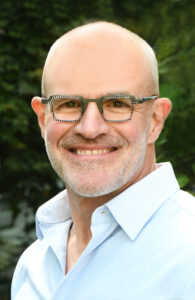
Jay Keasling, University of California, Berkeley
Production of supply-limited natural product therapeutics using engineered yeast
Eventbrite registration link: here
Abstract:
Plants produce some of the most potent human therapeutics and have been used for millennia to treat illnesses. Two examples are vinblastine, the chemotherapeutic, and QS-21, an adjuvant used in several vaccines. Both molecules are large, highly decorated terpenes. Vinblastine is extracted from Catharanthus roseus and requires 1 ton of dried leaves to obtain 1 g. In a similar vein, QS-21 is extracted from the tree bark of Quillaja saponaria, and its isolation is complicated as the plant extract contains a multitude of different structurally related Quillaja saponins, rendering the purification process highly laborious and low yielding. To alleviate supply issues, we have engineered Saccharomyces cerevisiae to produce these molecules.
For production of vinblastine, we have demonstrated de novo microbial biosynthesis of vindoline and catharanthine using a highly engineered yeast, and in vitro chemical coupling to vinblastine. We introduced 30 enzymatic steps beyond the yeast native metabolites geranyl pyrophosphate and tryptophan to catharanthine and vindoline. In total, 56 genetic edits were performed, including expression of 34 heterologous genes from plants as well as deletions, knock-downs, and overexpression of ten yeast genes to improve precursor supplies towards de novo production of catharanthine and vindoline, from which semi-synthesis to vinblastine occurs. As the vinblastine pathway is one of the longest monoterpene indole alkaloid biosynthetic pathways, this study positions yeast as a scalable platform to produce more than 3,000 natural MIAs and virtually infinite new-to-nature analogues.
For QS-21 biosynthesis, we upregulated the yeast native mevalonate pathway to provide a high carbon flux towards 2,3-oxidosqualene, which is then cyclized by a heterologous β-amyrin synthase and site-selectively oxidized by plant cytochrome P450s to yield quillaic acid, the aglycone of QS-21. We further introduced plant nucleotide sugar synthetic pathways to make seven non-native UDP-sugars, which are used to add sugars onto the C3 hydroxy and C28 carboxy functional groups of quillaic acid via the co-expression of QS-21 pathway glycosyltransferases. Furthermore, an engineered type I PKS LovF, two type III polyketide synthases (PKSs), as well as two standalone ketoreductases (KRs) were expressed in yeast to form the dimeric acyl unit that constitutes the last step prior to the terminal arabinofuranose addition to yield QS-21. Owing to the promiscuity of several enzymes, structural analogues of QS-21 have further been generated and characterized using the biosynthetic platform, allowing for future establishment of a structure-bioactivity relationship as well as the rational design of novel potent vaccine adjuvants.
Speaker Bio:
Jay Keasling is a Professor of Chemical & Biomolecular Engineering and of Bioengineering. The research in the Keasling Laboratory focuses on the metabolic engineering of microorganisms for the environmentally friendly synthesis of biofuels, commodity and specialty chemicals, and pharmaceuticals. To that end, we have developed a number of new genetic and mathematical tools to allow more precise and reproducible control of metabolism. These tools are being used in such applications as synthesis of biodegradable polymers, biofuels, flavors and fragrances, and pharmaceuticals.



